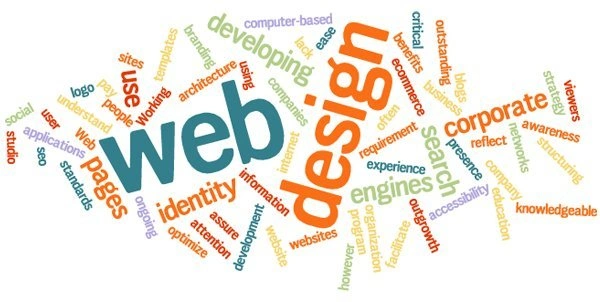Top 10 signs it’s time to partner with a Website Design Agency
Wiki Article
The Value of User Experience in Reliable Web Design Techniques
User experience (UX) serves as a keystone in efficient web design techniques. It shapes exactly how individuals interact with a site, influencing their complete satisfaction and probability of returning. A properly designed UX can boost engagement with user-friendly navigating and responsive formats. Nevertheless, ignoring these aspects may bring about aggravation and increased bounce prices. Recognizing the complexities of UX is crucial for developers aiming to create engaging digital experiences that reverberate with diverse audiences. What factors absolutely drive successful user involvement?Comprehending User Experience and Its Influence On Style
User experience (UX) is frequently viewed as a mere element of internet layout, it fundamentally shapes how users interact with a website. UX encompasses all elements of the user's communication, consisting of use, accessibility, and overall fulfillment. A positive UX promotes interaction, urging customers to explore the site and return in the future. Alternatively, an adverse experience can bring about irritation, resulting in high bounce prices and shed possibilities for conversion.Design elements like format, navigating, and web content company play vital duties fit this experience. Reliable UX layout prepares for user needs and choices, guaranteeing that info is aesthetically enticing and quickly available. In addition, recognizing user habits with analytics can supply useful understandings, notifying style choices that boost use. Eventually, an extensive understanding of UX permits designers to develop sites that not just attract users yet likewise promote meaningful interactions that straighten with service goals and user expectations.
Trick Concepts of Efficient User Experience
Effective user experience depends upon numerous essential principles that boost web site performance and involvement. Intuitive navigation layout, responsive format fundamentals, and the significance of aesthetic pecking order are vital components that contribute to a seamless interaction in between users and internet content. Recognizing these principles permits developers to produce more easy to use and accessible digital environments.Intuitive Navigation Style
When customers run into an internet site, intuitive navigation style works as a critical gateway to their total experience. Reliable navigation enables customers to effortlessly situate the information they seek, improving their communication with the site. Secret principles include clear labeling, sensible company, and consistent positioning of navigating elements. Tags should be simple, allowing users to anticipate the web content they will certainly find. A well-structured pecking order assists customers comprehend the connection in between different sections, directing them with the web site flawlessly. Additionally, responsive food selections and conveniently obtainable web links add to a liquid experience throughout devices. By prioritizing user-friendly navigation, designers can considerably minimize user frustration and rise interaction, ultimately cultivating a favorable understanding of the web site and its content.Responsive Layout Essentials
A well-structured navigating system normally causes the requirement for a responsive layout, which is vital in today's varied digital landscape. A receptive layout warranties that websites feature effortlessly throughout different devices, including desktop computers, tablet computers, and mobile phones. This flexibility improves user experience by enabling web content to be visually coherent and quickly accessible, no matter screen size. Trick concepts of responsive layout include liquid grids, flexible images, and media queries, which promote ideal watching. Additionally, focusing on touch-friendly components boosts interaction on mobile phones. By carrying out a responsive design, developers can fit individuals' demands, lessen bounce prices, and rise engagement. Ultimately, a well-executed responsive layout promotes a favorable user experience, encouraging site visitors to discover the site even more.Aesthetic Pecking Order Value
Visual pecking order plays an essential function in guiding customers through a site, ensuring that important details records their focus initially. By strategically using size, color, spacing, and comparison, developers can develop a clear path for users to adhere to. Bigger aspects typically attract the eye, suggesting their relevance, while contrasting colors can highlight phone calls to action. Additionally, regular positioning and grouping of associated material enhance understanding, making navigating instinctive. Effective use visual pecking order not just boosts usability but likewise supports the general aesthetic of the site, cultivating a favorable user experience. When individuals can quickly identify the most important info, they are most likely to involve with the material, leading to increased complete satisfaction and interaction with the internet site.The Duty of Functionality in Web Design
Usability plays an important role in web design, specifically via navigation simplicity and adherence to accessibility criteria. Effective navigating boosts user fulfillment by allowing site visitors to find info rapidly and intuitively. Conference ease of access criteria ensures that all individuals, regardless of their capacities, can effectively engage with the website.Navigating Simplicity
Simpleness in navigation stands as a foundation of efficient web design, greatly influencing user experience. A structured navigating system allows individuals to discover information promptly and without effort, lowering frustration and boosting fulfillment. Clear labeling and logical structure are vital components, leading individuals easily through the site. Repetitive links or extremely intricate food selections can confuse customers, causing boosted bounce rates. In addition, mobile responsiveness has to be taken into consideration, ensuring navigating stays simple throughout gadgets. Decreasing and focusing on essential pages clutter even more supports user interaction. Efficient navigating not just cultivates a favorable experience yet additionally urges individuals to check out the website a lot more extensively, ultimately resulting in greater conversion rates. Hereof, navigation simpleness serves as a vital consider the general efficiency of web design techniques.Ease of access Criteria
User involvement is greatly boosted when websites comply with ease of access criteria, guaranteeing that all users, no matter their abilities, can browse and engage successfully. Compliance with these criteria not just expands the target market but additionally improves general user fulfillment. Available style integrates attributes such as message alternatives for photos, keyboard navigating, and sufficient shade contrast, which facilitate use by individuals with specials needs. Furthermore, carrying out these standards can favorably affect search engine optimization (SEO) by boosting site framework and clarity. As web design advances, prioritizing availability ends up being necessary in cultivating an inclusive electronic atmosphere. By embracing these criteria, designers add to a more fair internet, eventually driving user commitment and engagement.Relevance of Responsive Design for User Involvement
As consumers progressively accessibility sites via a range of tools, the significance of receptive layout becomes vital for involving users successfully. Receptive style warranties that a website adapts effortlessly to various screen sizes, giving an excellent viewing experience no matter the gadget utilized. This flexibility boosts user engagement by assisting in easier navigating and communication with web content.When customers experience a web site that is receptive, they are most likely to remain much longer, discover better, and return in the future. A properly designed receptive format decreases the aggravation typically related to scrolling and zooming on smaller screens, thereby reducing bounce rates. Furthermore, responsive style can positively influence online search engine positions, as internet search engine prioritize mobile-friendly websites. In today's electronic landscape, where mobile usage remains to rise, applying receptive style is not just useful, but important try these out for maintaining user engagement and ensuring a favorable experience throughout all gadgets.
Enhancing Load Times for Better User Contentment

To improve load times, web developers should focus on maximizing images, leveraging web browser caching, and decreasing HTTP demands. Additionally, utilizing Content Delivery Networks (CDNs) can quicken content delivery by distributing it across different geographical areas. Streamlining code, such as compressing CSS and JavaScript data, additionally adds to much faster filling speeds.
Eventually, a dedication to enhancing lots times not just enhances user satisfaction but also enhances brand name commitment and boosts the probability of repeat sees. A swift, smooth experience is crucial for retaining individuals and promoting positive interactions.
The Impact of Visual Power Structure on User Communication
Aesthetic power structure offers as a necessary component in assisting user interaction on an internet site. By arranging web content in such a way that prioritizes details visually, designers can affect exactly how individuals navigate and involve with a website. This power structure is established through various layout methods, including dimension, spacing, contrast, and shade. For instance, bigger typefaces or vibrant colors accentuate vital components, such as contact us to activity or headlines, while controlled colors and smaller typefaces can indicate subservient info.Efficient visual power structure helps individuals rapidly identify what is most crucial, reducing cognitive load and improving functionality. It permits intuitive navigation, making it much easier for customers to discover what they need without stress. As individuals interact with an internet site, a well-structured visual hierarchy fosters a much more rewarding experience, inevitably causing greater interaction and conversion rates. Developers need to focus on these concepts to create an user-centered and efficient internet setting.
Determining User Experience: Devices and Techniques

Frequently Asked Concerns
How Can I Improve My Web site's User Experience on a Budget?
To boost a site's user experience on a spending plan, one can optimize page lots speed, streamline navigation, carry out responsive layout, enhance content clearness, and collect user responses for continuous refinements, making sure a satisfying visitor experience.What Prevail User Experience Blunders to Avoid in Web Design?
Typical user experience blunders in web design include cluttered layouts, poor navigation, slow loading times, absence of mobile responsiveness, overlooking accessibility, inconsistent branding, and failing to focus on user feedback - agency for web design. Each can considerably impede total website efficiency
Exactly how Frequently Should I Update My Site for Better User Experience?
Websites should be upgraded consistently, preferably every couple of months, to preserve optimal user experience. Frequent updates help address use concerns, freshen content, and adjust to altering user requirements, making sure the site remains engaging and pertinent.
Can User Experience Impact SEO Rankings on My Internet site?
User experience can significantly affect SEO positions, as internet search engine prioritize sites that offer smooth navigation, fast loading times, and appealing content. A positive user experience can cause reduced bounce rates and greater search presence.What Role Does Availability Play in User Experience Layout?
Accessibility plays a vital duty in user experience design by guaranteeing that all individuals, no matter of capabilities, can navigate and communicate with a site efficiently. This inclusivity improves general satisfaction and interaction among varied users.User experience (UX) is often viewed as a simple facet of internet style, it basically forms exactly how users communicate with a web site. User involvement is greatly improved when sites adhere to availability criteria, making sure that all users, regardless of their capabilities, can navigate and connect successfully. Determining user experience (UX) is necessary for recognizing just how successfully a web site fulfills the demands of its individuals. In addition, functionality testing, where real individuals navigate the site while observers note problems, uses straight feedback on user experience. Common user experience blunders in internet style consist of messy formats, bad navigation, sluggish packing times, absence of mobile responsiveness, ignoring access, click reference irregular branding, and falling short to focus on user comments.
Report this wiki page